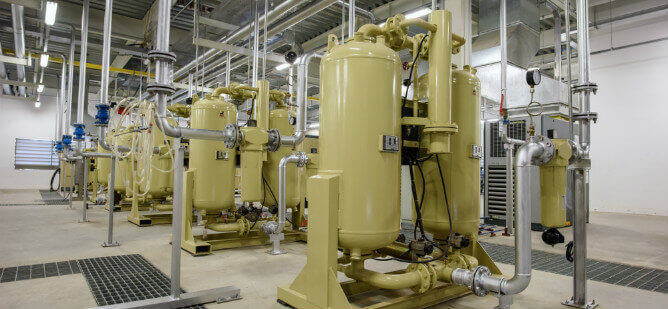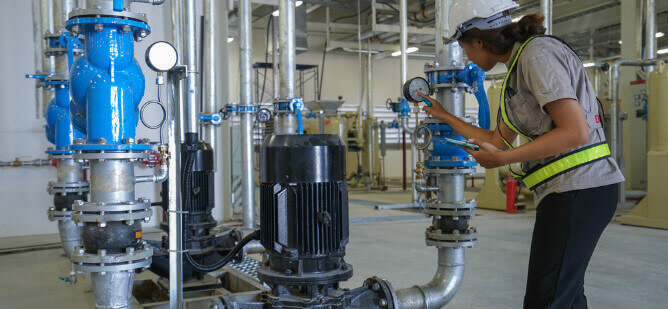
How To Calculate Compressor Free Air Delivery (FAD)
A fundamental approach to measuring the performance of installed air compressors includes measuring their free air delivery (FAD). While this measurement can be challenging, leveraging accurate flowmeters and some mathematical formulas can simplify the entire process. This article presents a guide for calculating air compressor FAD and overviews some key factors that can influence the efficiency of the equipment.
Measuring Performance of Installed Air Compressors
Air compressors are critical to several industrial applications. The general working principles of this industrial equipment include the intake of ambient air, pressurization/compression, and discharge into a compressed air network. Manufacturer power rating and FAD specifications come with new air compressors for defining their power. Manufacturers also measure air compressor performance in line with international standards (i.e., ISO 5389 for centrifugal air compressors) and present their results in data sheets. While these specifications and measurements remain crucial, operators need to acknowledge on-site measurements, a more acceptable measure of air compressor performance. Since air compressors degrade over their lifetime and may require overhauls, on-site and real-time air compressor performance estimations is crucial for maximizing equipment efficiency.
Operators must be able to ascertain air compressor electrical power consumption, compressed air delivery levels, and pressure profile to gain clear insights into the overall performance of their equipment. Thus, these operators must implement one of the two performance measurement types, depending on their goals, including temporary and permanent performance measurements. While the former plays a vital role in system assessments, especially before investing in a new air compressor, operates must continuously implement the latter to achieve real-time equipment monitoring and identify and meet maintenance needs.
Factors that Affect Air Compressor Efficiency
Several factors can influence the air compressor efficiency regardless of its type (i.e., rotary-screw or centrifugal). These factors include:
- Intake conditions
- Power supply
- Operating pressure
- Motor efficiency
- Air compression unit
- Drains, leakages, and internal use

Compressor intake conditions, such as ambient temperature, relative humidity, and absolute pressure, can significantly influence air compressor efficiency. For instance, while a compressor at 20°C ambient temperature and 0% relative humidity exhibits a FAD flow of 100m3/min, a compressor at 35°C ambient temperature and 70% relative humidity exhibits a FAD flow of 100m3/min. The power supply quality also determines the performance efficiency of the equipment. Operators also require the outlet pressure measurement of the compressor to detect and optimize its efficiency. Since the motor and the overall compressor unit can wear over their lifetime, operators must also monitor these components to achieve high efficiency. Finally, any prevalent leakage in the compressor can minimize its efficiency and overall performance.
How to Calculate the FAD (Free Air Delivery)
Generally speaking, air compressor FAD is the expanded volume of air the equipment forces into its air main (or network) over a given time frame. ISO 1217 standards stipulate the proper free air delivery calculation method. This method includes measuring:
- The temperature, atmospheric pressure, and humidity conditions at the air inlet of the compressor unit
- The maximum operating temperature and pressure and the compressed air volume from the outlet of the unit
ISO 1217 standards also recommend referring the measured outlet volume back to the inlet conditions using the following equation:
V1 = (V2 ⋅ P2 ⋅ T1) / (T2 ⋅ F1)
It is noteworthy that F1 is a factor that can be estimated using the following equation:
F1 = P1 − (Pp ⋅ Frel)
Where;
P1 = inlet pressure
Pp = vapor pressure
Frel = inlet humidity
The measurement units for FAD include m3/min and l/s. Since the ISO 1217 standards initially allowed flow meters that measure air mass flow, operators must convert this measurement to intake volume flow rate in line with the air density.
Contact NiGen for Professional Air Compressor Services
NiGen offers its clients the industry-best services for their nitrogen generation needs. We build and maintain cost-effective on-site air compression technologies that meet several industrial and client specifications.
Contact us today for professional air compressor services.
